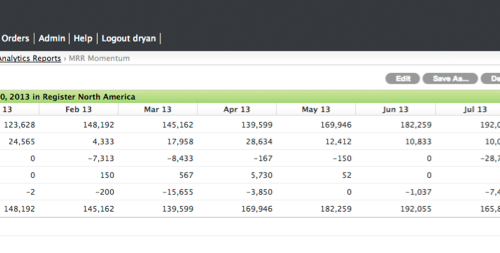MRR is an acronym for Monthly Recurring Revenue, which can be contracted, committed, or a predictable revenue stream. A primary purpose of MRR is to permit performance reporting across dissimilar subscriptions terms.
Understanding MRR
- What is MRR and how to you measure it?
- How is MRR different from GAAP Revenue?
- How to you calculate and measure MRR?
- How is MRR used to manage your subscription business?
- Special issues and thoughts for MRR used in Sales Compensation
- The impact of adjustments and credits in MRR calculations
- How to report on MRR in a spreadsheet
How is MRR Used?
In the finance function, MRR is used in or to:
- Report on growth from new contracts, including those with different term lengths
- Report on net gross expansion and contraction from existing customers
- Assess trends in ASP (average selling price)
- Calculate Customer Lifetime Value
- Report on MRR Cohorts (typically by customer start month, quarter or year)
- Estimate or project future GAAP revenue
MRR In Sales Performance and Compensation
Given the importance of MRR growth in the subscription business model, MRR is more and more a consideration in sales compensation plans. However, measurement of MRR for sales compensation often requires a set of “exception” rules that are more complicated than those for a MRR measurement performed for the purpose of assessing strategic business performance.
The primary issues typically involve the inclusion or exclusion of subscription records, the value of MRR, and the timing of transactions.
Get the full article, formulas, spreadsheets, examples here: SaaS Optics

